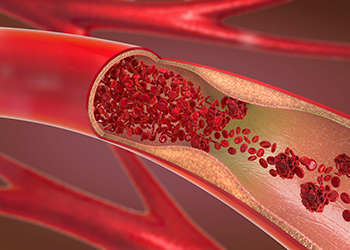
Heart attacks and strokes combined are the leading cause of death worldwide. In addition, the survivors of heart attacks or strokes are often left with a major disability, such as heart failure, which severely reduces their ability to work, their quality of life, and their lifespan. As such, cardiovascular disease represents an enormous cost to the health care system and society as a whole.
The main disease state leading to heart attacks and strokes is a hardening and blockage of arteries known as atherosclerosis. Despite great advances in understanding the risk factors for atherosclerosis and treatments to reduce the risk of a first or further heart attack or stroke, the frequency of these events remains high.
Data access has been approved for a research study aiming to advance our knowledge of how atherosclerosis develops in the human body. The project, funded by the Canadian Institutes for Health Research, is being led by Dr. Gordon Francis, Professor of Endocrinology in the Faculty of Medicine at the University of British Columbia.
While some component of heart disease and stroke is dependent on modifiable lifestyle factors, much of it is dependent on inherited factors, such as a tendency to high cholesterol, that cannot be treated by lifestyle changes, and that keeps a person at high risk for developing premature heart disease or stroke.
A major cause of atherosclerosis is trapping of the “bad” cholesterol in the walls of blood vessels such as the coronary arteries. “The cells that take up this cholesterol in arteries have long been thought to be mainly a type of white blood cell called macrophages,” explains Dr. Francis. “Our research done over several years has shown that another cell type in arteries, smooth muscle cells, appear to be the main place the cholesterol accumulates. Our previous work also suggests smooth muscle cells have a reduced amount of the main cholesterol exporter protein, meaning they can take up the cholesterol but have a reduced ability to release it, when compared to the macrophages.”
The team will test whether the proportion of smooth muscle cell versus white blood cell-derived foam cells in individual patient samples correlates with patient’s use of cholesterol-lowering medications, including statin therapy. Because the smooth muscle foam cells are resistant to releasing their cholesterol, the hypothesis is that patients who were on statin therapy prior to the time of heart transplant will have a higher ratio of smooth muscle cell foam cells to macrophage foam cells compared to patients that were not on statin therapy.
The study population is a group of heart transplant recipients who received a heart transplant between 1996 and 2019, and donated their poorly functioning heart for use in research. PopData will link PharmaNet data from the BC Ministry of Health with data from the Cardiovascular Tissue Registry for the project.
“We are studying where this cholesterol deposits in the artery, and why, in hopes that we or others will use this information to develop new ways to lower the risk of heart attack and stroke,” concludes Professor Francis. “The end points of such research, novel treatments and preventive measures, are expected to lead to definite improvements in the health and quality of life for Canadians and people worldwide.”